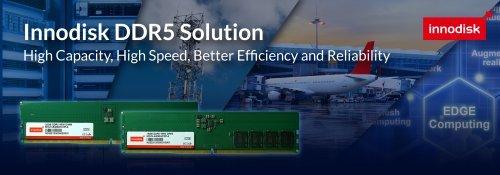The JESD79-5 DDR5 SDRAM specification signaled the transition to DDR5, with significant improvements in capacity, speed, voltage, and ECC functions. The DDR5 specification details up to four times as much capacity per IC, raising the maximum achievable per die capacity to 64Gb and bringing the maximum potential capacity for a single DDR5 DIMM to 128GB.
DDR5 also has a theoretical maximum transfer speed of 6400MT/s, doubling the rate of DDR4. Meanwhile, the voltage has been dropped from 1.2V to 1.1V, reducing overall power consumption. A further major structural change is power management is moved onto the DIMM, reducing redundant power management circuitry on the motherboard for unused DIMM slots.
Another significant structural change is dual-channel DIMM architecture. For DDR5, each DIMM has two 40bit channels (32 data bits, eight ECC bits each) for the same data total with more ECC bits. Two smaller independent channels improve memory access efficiency, leading to greater speeds with higher efficiency. Innodisk currently offers DDR5 up to 32GB and 4800MT/s.
Less than a year since the DDR5 specification release, early adoption should happen by Q4. "Our customers are excited about the potential DDR5 has to invigorate their application developments," said Samson Chang, Corporate VP & GM of global embedded and server DRAM business unit, at Innodisk. He added that "Innodisk brings quality products to the industry by introducing new DDR5 DIMMs with original ICs, antisulfuration, heat spreader, and conformal coating technologies with industrial-grade reliability they’ve come to expect from us."
Hyperscalers are the likely early adopters, but in the long term, most industries should feel the benefits of DDR5 in 5G, deep learning, AI, edge computing, smart medical, supercomputing, and mission-critical applications.
Innodisk Europe B.V.
Pisanostraat 57
NL5623CB Eindhoven
Telefon: +49 (152) 5100 6027
http://www.innodisk.com/
MEPAX
Telefon: +34 (620) 065-719
E-Mail: l.gordon@mepax.com
![]()

